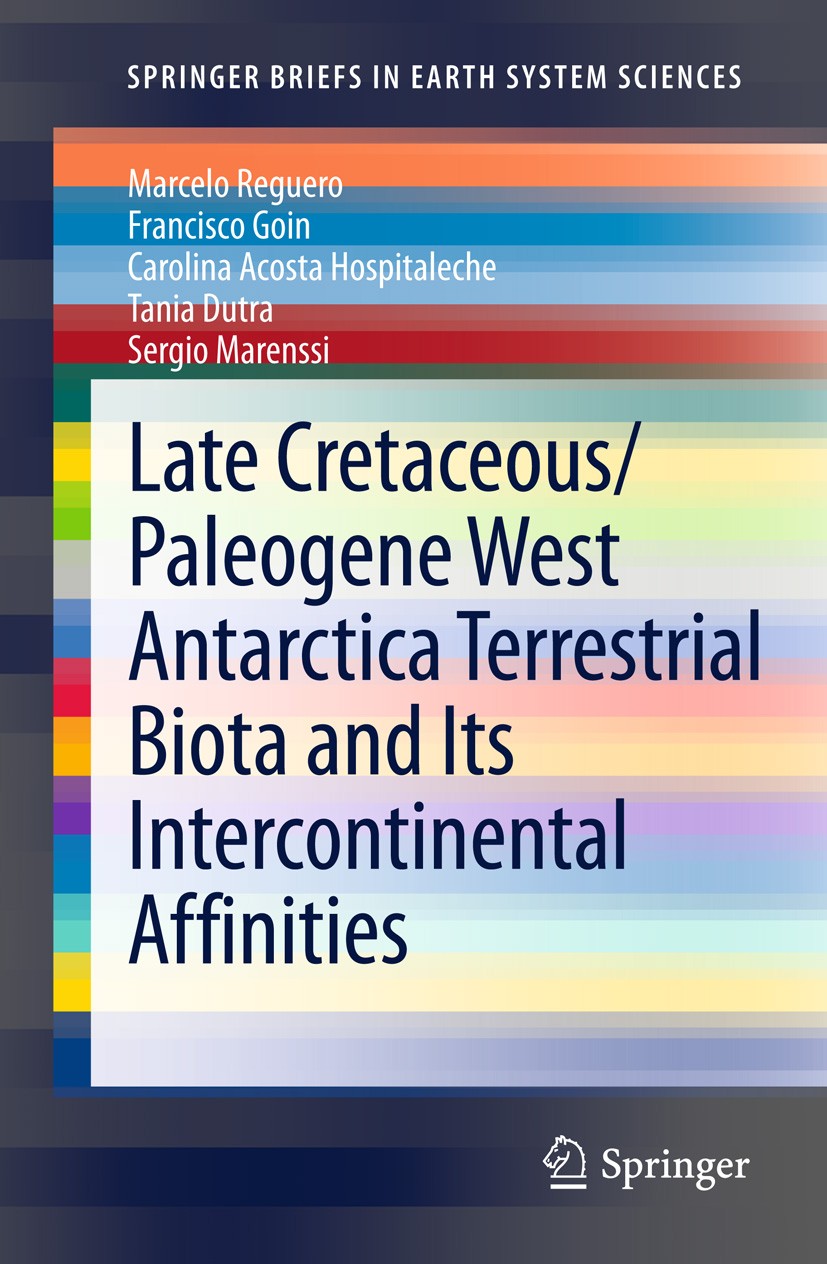| 书目名称 | Late Cretaceous/Paleogene West Antarctica Terrestrial Biota and its Intercontinental Affinities | | 编辑 | Marcelo Reguero,Francisco Goin,Sergio Marenssi | | 视频video | http://file.papertrans.cn/582/581765/581765.mp4 | | 概述 | Includes supplementary material: | | 丛书名称 | SpringerBriefs in Earth System Sciences | | 图书封面 |  | | 描述 | One of the most intriguing paleobiogeographical phenomena involving the origins and gradual sundering of Gondwana concerns the close similarities and, in most cases, inferred sister-group relationships of a number of terrestrial and freshwater vertebrate taxa, e.g., dinosaurs, flying birds, mammals, etc., recovered from uppermost Cretaceous/ Paleogene deposits of West Antarctica, South America, and NewZealand/Australia. .For some twenty five extensive and productive investigations in the field of vertebrate paleontology has been carried out in latest Cretaceous and Paleogene deposits in the James Ross Basin, northeast of the Antarctic Peninsula (AP), West Antarctica, on the exposed sequences on James Ross, Vega, Seymour (=Marambio) and Snow Hill islands respectively. .The available geological, geophysical and marine faunistic evidence indicates that the peninsular (AP) part of West Antarctica and the western part of the tip of South America (Magallanic Region, southern Chile) were positioned very close in the latest Cretaceous and early Paleogene favoring the “Overlapping” model of South America-Antarctic Peninsula paleogeographic reconstruction. .Late Cretaceous deposits from Vega | | 出版日期 | Book 2013 | | 关键词 | Antarctic Peninsula; Early Paleogene; Late Cretaceous; Paleobiogeography; West Antarctica | | 版次 | 1 | | doi | https://doi.org/10.1007/978-94-007-5491-1 | | isbn_softcover | 978-94-007-5490-4 | | isbn_ebook | 978-94-007-5491-1Series ISSN 2191-589X Series E-ISSN 2191-5903 | | issn_series | 2191-589X | | copyright | The Author(s) 2013 |
The information of publication is updating

|
|
 |Archiver|手机版|小黑屋|
派博传思国际
( 京公网安备110108008328)
GMT+8, 2025-12-17 13:45
|Archiver|手机版|小黑屋|
派博传思国际
( 京公网安备110108008328)
GMT+8, 2025-12-17 13:45


